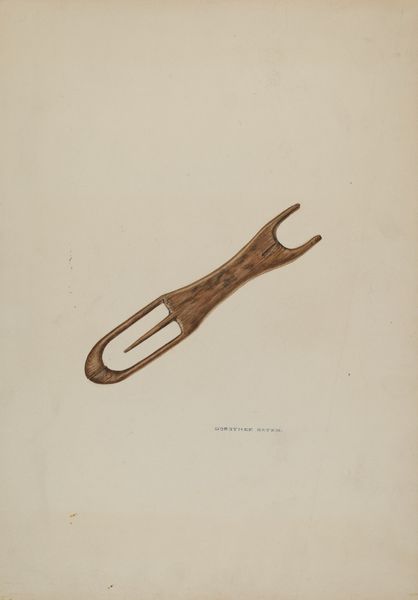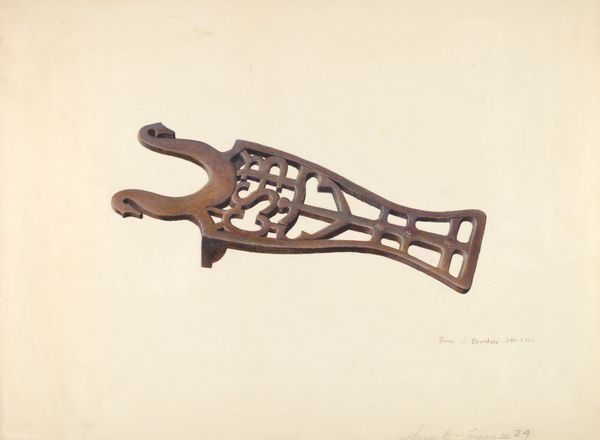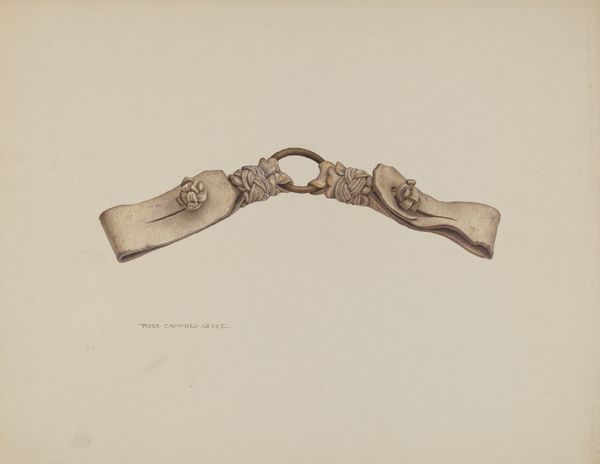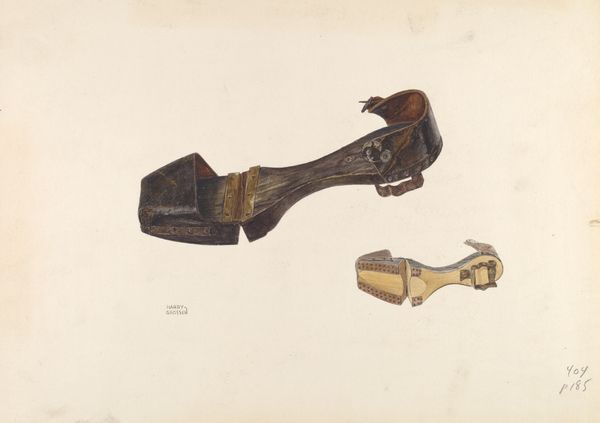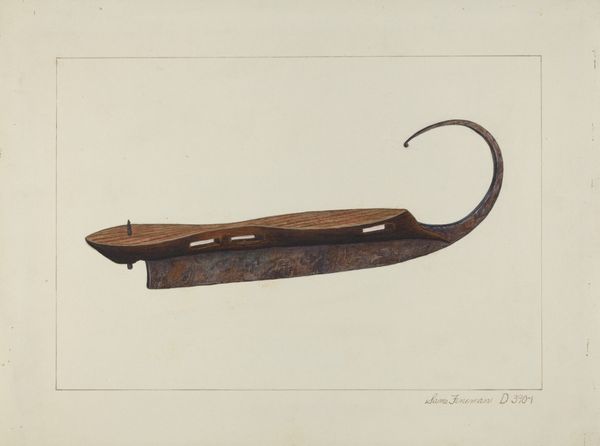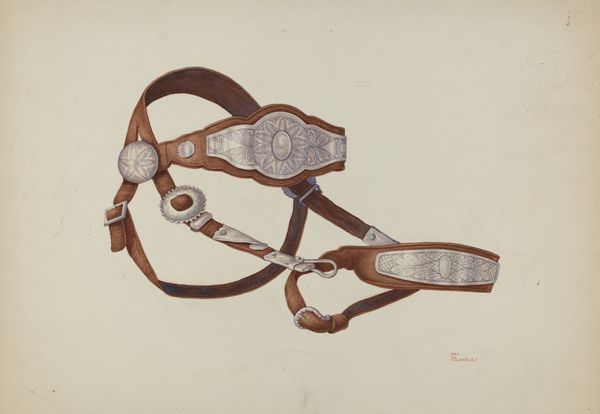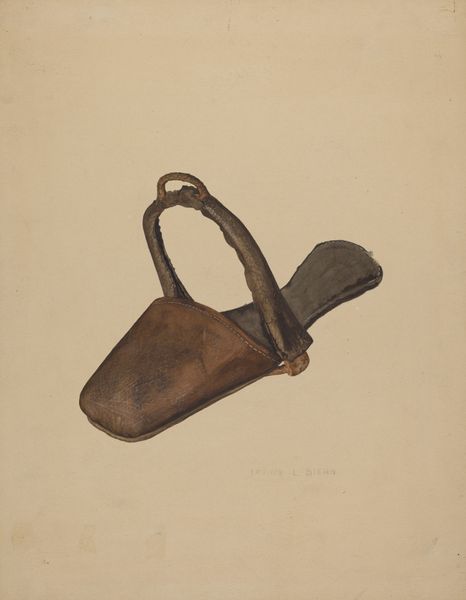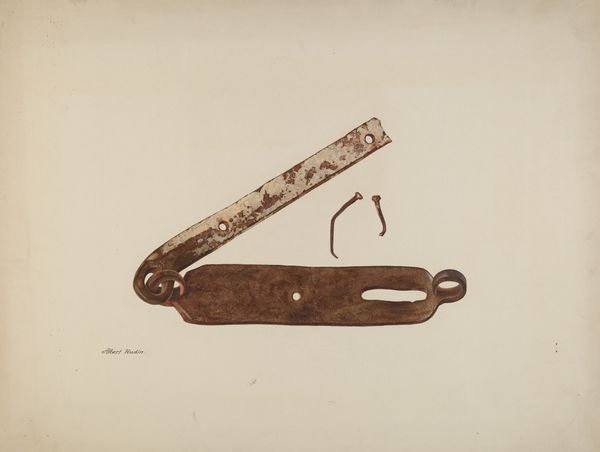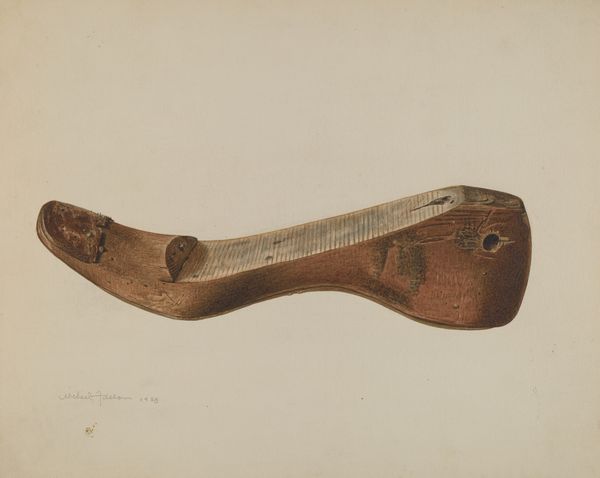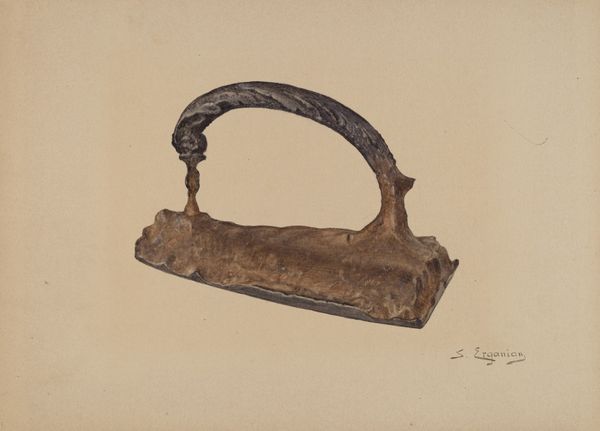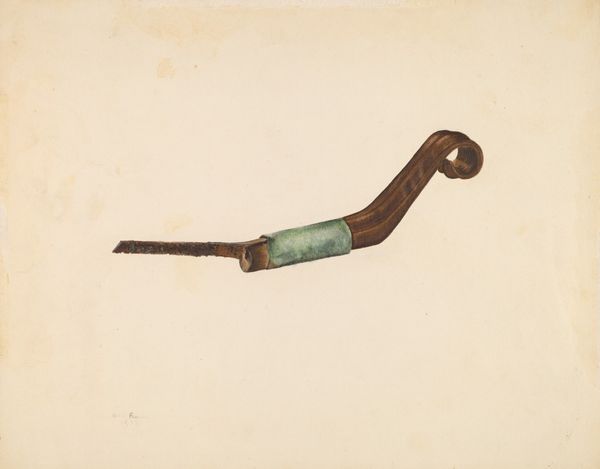
drawing, paper, pencil
#
drawing
#
paper
#
pencil drawing
#
pencil
#
modernism
#
realism
Dimensions: overall: 42.9 x 35.4 cm (16 7/8 x 13 15/16 in.)
Copyright: National Gallery of Art: CC0 1.0
Curator: Looking at "Trivet," a 1939 pencil drawing on paper by Ethel Clarke, one can't help but notice the subject matter. Editor: It strikes me immediately as a poignant study of domesticity, rendered in muted tones, a still life of the everyday elevated to art. Curator: Precisely. Clarke’s attention to form is meticulous. Consider the almost architectural rendering of the trivet itself— the deliberate angles contrasting with the looping flourishes. The linework emphasizes depth, even within the apparent simplicity of the piece. Editor: Yes, and that contrast speaks volumes. You have this rigid form created through manual labor, its purpose functional. The addition of ornamental heart shapes hints at personal craft, a desire for beauty even within a purely functional item. What are your thoughts about the paper? It gives it all its atmosphere, its character, wouldn't you agree? Curator: Absolutely, the materiality adds another layer to our understanding. The visible tooth of the paper provides textural variation and imbues the image with authenticity, preventing it from feeling sterile. This reminds me that this work stands in its own space in terms of aesthetic values. Editor: This choice of material reveals the intersection between design, labor, and home life. There’s an implied narrative. These crafted details also subtly push back on the total standardization of early 20th-century industry and machine-made functional forms. Curator: I concede to the cultural and historical implications. But, primarily, this artwork succeeds because of its internal logic, the self-contained system of forms and lines within its own aesthetic paradigm. Editor: Yet its resonance stems from its accessibility—a common object transformed. The choice to draw it, rather than photograph it or merely use it, restores the idea of craft, almost honoring the manual process. Curator: Fair points to ponder. Regardless of how one chooses to interpret its intention or history, this artfully wrought form offers insight into its subject through both what it renders visible and how it represents what it chooses to reveal. Editor: Precisely; I think by bringing new importance and aesthetic weight to commonplace and historically unrecognized labor-intensive object making practices, Clarke is challenging conventions around domestic life. It all becomes charged.
Comments
No comments
Be the first to comment and join the conversation on the ultimate creative platform.
